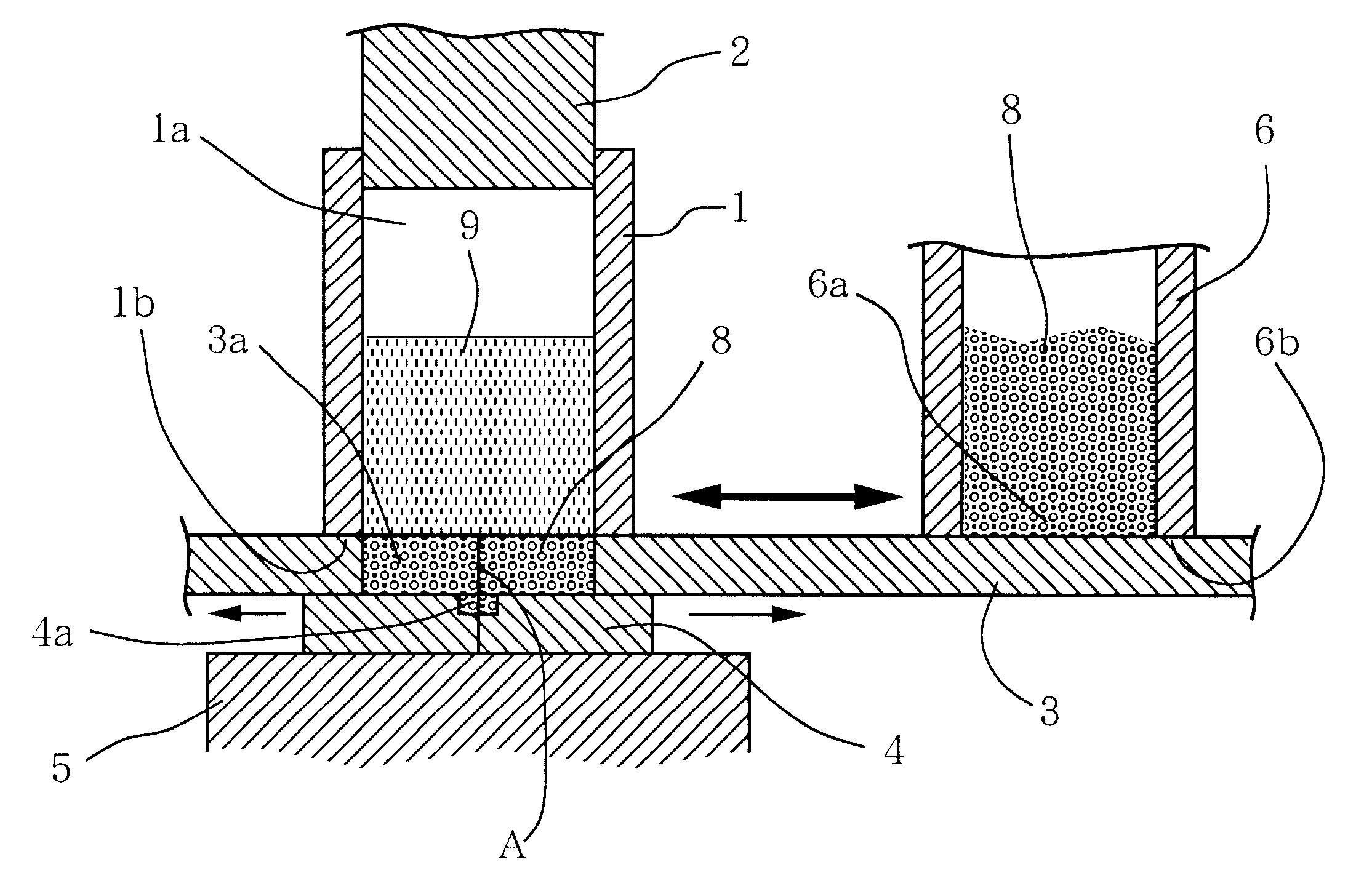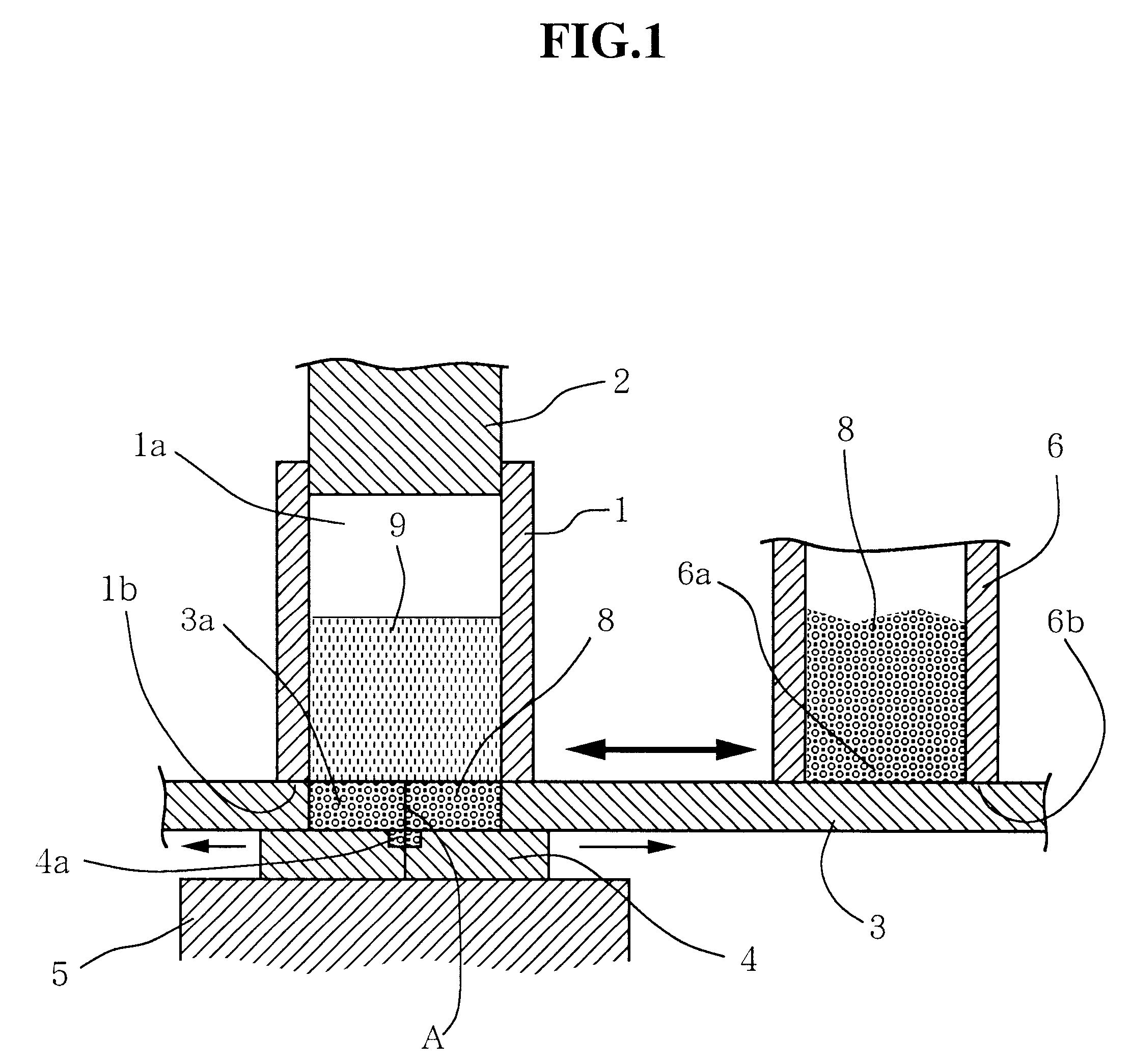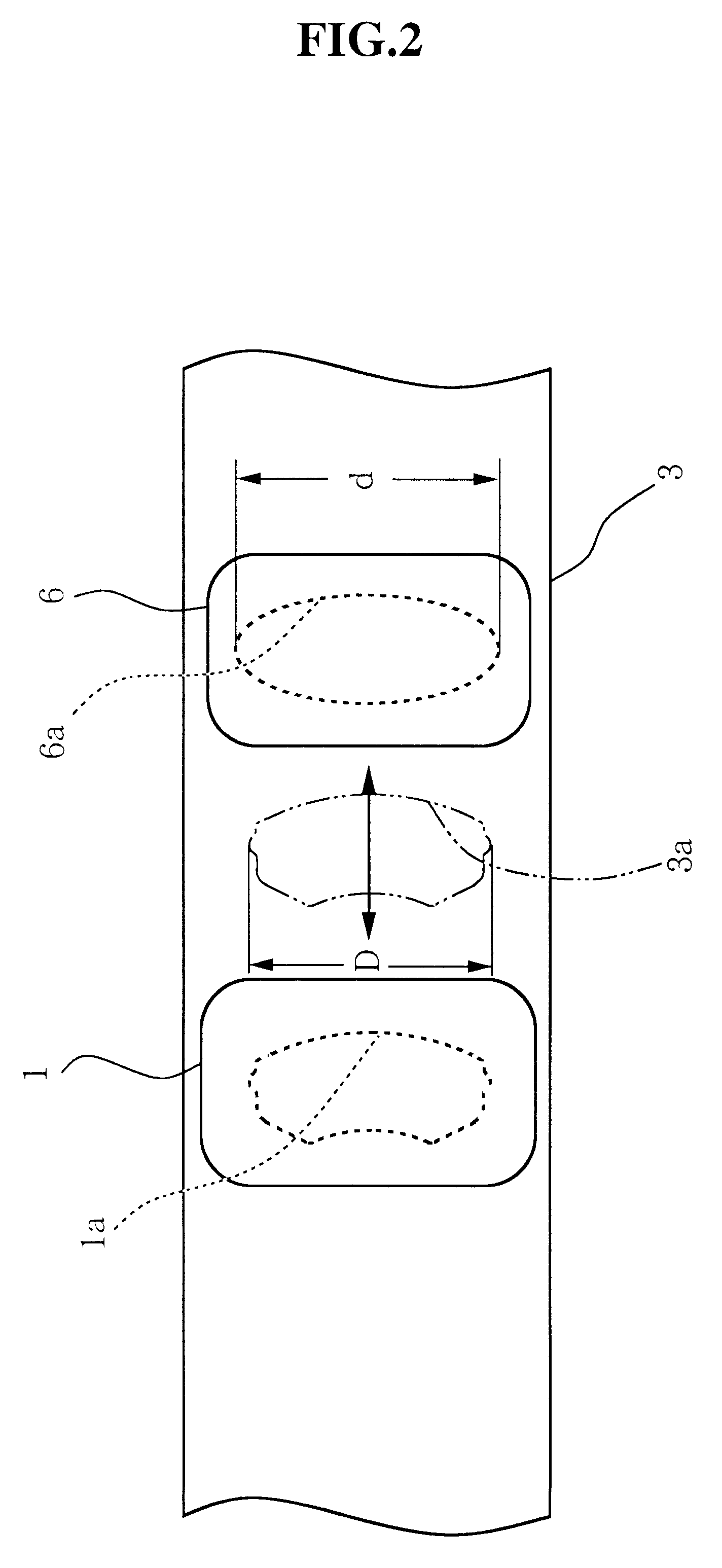Friction component manufacturing apparatus and method
a manufacturing apparatus and friction component technology, applied in the field of friction component manufacturing apparatus and method, can solve the problems of insufficient adhesion strength of this portion, failure to provide uniform thickness, and prone to problems in thick parts of the adhesive layer
- Summary
- Abstract
- Description
- Claims
- Application Information
AI Technical Summary
Problems solved by technology
Method used
Image
Examples
third embodiment
FIGS. 5 and 6 show a friction component manufacturing apparatus according to this invention wherein the friction component has a three-layer structure. According to this embodiment, a thicker portion 3c is formed in the middle of a first slide plate 3, and the void 3a is formed in this portion 3c to eliminate the need for the separate bottom plate 4. The void 3a includes a recessed portion 3d in which a boss section is formed, and the first slide plate 3 can be split into two at the center of the recessed portion 3d in both lateral directions. In addition, a second slide plate 16 is provided on the first slide plate 3, and a void 16a is formed in the second slide plate 16. The second slide plate 16 can also be moved in the horizontal direction. The void 16a constitutes a hole penetrating the second slide plate 16, and the first slide plate 3 also acting as a bottom plate for the void 16a.
A second hopper 17 is provided on the left of the second slide plate 16 and accommodates a secon...
fourth embodiment
FIG. 11(a), FIG. 11(b) and FIG. 12 show this invention which is an example of a four-layer structure. FIG. 11(a) is a vertical sectional view, FIG. 11(b) is a sectional view taken along line B--B in FIG. 11(a), and FIG. 12 is a top view. According to this embodiment, a third slide plate 21 is inserted between the first and second slide plates 3 and 16. A void 21a is formed in the third slide plate 21 and consists of a hole penetrating the plate 21. In FIG. 12, the slide plates 3, 16, and 21 are moved so that the voids 3a, 16a, and 21a can be seen from above. As shown in FIG. 12, the voids 3a, 16a, and 21a all have the same size and shape as seen from above.
Although the first slide plate 3a has no bottom plate, it may use the bottom plate 4 as in the embodiment shown in FIG. 1. According to the embodiment in FIG. 5, the first slide plate 3 also acts as the bottom plate of the second slide plate 16, whereas this embodiment uses a separate bottom plate 22 due to the difference in heigh...
PUM
| Property | Measurement | Unit |
|---|---|---|
| Thickness | aaaaa | aaaaa |
| Shape | aaaaa | aaaaa |
Abstract
Description
Claims
Application Information
 Login to View More
Login to View More - R&D
- Intellectual Property
- Life Sciences
- Materials
- Tech Scout
- Unparalleled Data Quality
- Higher Quality Content
- 60% Fewer Hallucinations
Browse by: Latest US Patents, China's latest patents, Technical Efficacy Thesaurus, Application Domain, Technology Topic, Popular Technical Reports.
© 2025 PatSnap. All rights reserved.Legal|Privacy policy|Modern Slavery Act Transparency Statement|Sitemap|About US| Contact US: help@patsnap.com



